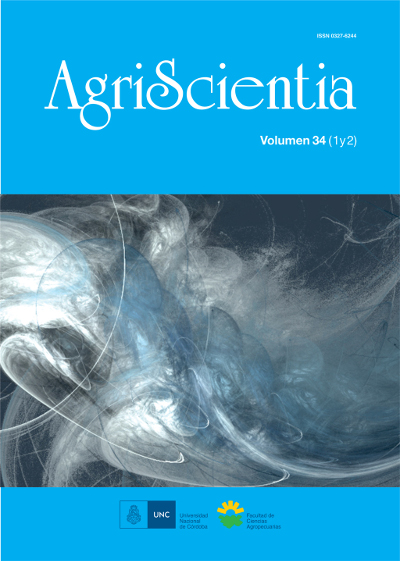Phenotypic and molecular evaluation of Ppd-1 alleles in a bread wheat biparental population
Main Article Content
Abstract
The constant increase in temperatures, as a consequence of climate change, affects the regions where wheat is grown and thus demands an adjustment of crop cycle to shorter periods with the purpose of decreasing the high temperature stress. Therefore, the discovery of new genetic sources of flowering modulation and the development of molecular tools that enable their use, take a main role in wheat breeding. In this study, the effect of Ppd-1 on flowering time was evaluated in a bread wheat biparental population, under controlled conditions. Novel molecular markers for Ppd-A1 and Ppd-B1 genes were developed. The results showed an unequal effect of Ppd-1 loci (Ppd-A1, Ppd-B1 and Ppd-D1) on photoperiod response. Ppd-D1 was the locus with the greatest effect on photoperiod response, while Ppd-B1 and Ppd-A1 presented minor and null effects, respectively. It could be concluded that long day stimulation is not essential to wheat flowering.
Article Details
How to Cite
Phenotypic and molecular evaluation of Ppd-1 alleles in a bread wheat biparental population. (2017). AgriScientia, 34(2), 45-57. https://doi.org/10.31047/1668.298x.v34.n2.19040
Issue
Section
Articles
How to Cite
Phenotypic and molecular evaluation of Ppd-1 alleles in a bread wheat biparental population. (2017). AgriScientia, 34(2), 45-57. https://doi.org/10.31047/1668.298x.v34.n2.19040





